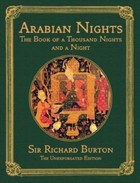Also: Ker or Cer [singular], Letum [Roman]
From Greek mythology, the Keres are the personifying spirits of violent or cruel death, including those caused by epidemic diseases. They are dark, hateful, and frightening beings that tear souls away from the bodies of the dying, which are then sent to the entrance of the underworld (Hades). They crave blood, feasting upon the bodies once they have removed the souls. They are depicted as black-winged women, with fangs and talons, wearing bloody garments. They are also bestial in nature, inclined to fight among themselves over their prey.
According to Hesiod, the Keres are the daughters of Nyx, the Greek personification of Night, which would make them sisters to the Moirae (the three Fates). As such, the Keres serve the Moirae by delivering punishment to those who have committed crimes. Some sources say they, themselves, are the souls of the dead.
The Keres hover over battlefields by the thousands -- accompanied by Eris, goddess of discord, and Cydoimos, the personification of battle confusion. They accost the wounded and dead, and they drag the dead away by their feet.
...and Ker the destructive; she was holding a live man with a new wound, and another one unhurt, and dragged a dead man by the feet through the carnage. The clothing upon her shoulders showed strong red with the men's blood as she glared horribly and gnashed her teeth till they echoed. All [the Keres] closed together like living men and fought with each other and dragged away from each other the corpses of those who had fallen
~ Iliad, 18. 535
Though they are formidable, their power does have limitations. Unlike the Moirae, they do not have absolute power over life and death. And they are subject to the Olympian gods, who can deter the Keres should they choose to. There is also a ritual, performed at the close of the Athenian festival of the Anthesteria, that drives the Keres out of homes and cities. There is a Greek proverb originating from this: Out of doors, Keres! It is no longer Anthesteria.
 In some Classical literature, the Keres are linked with the Erinys (Furies), the three avenging spirits. There may also be a connection between Keres and Valkyries, war spirits from Norse mythology.
In some Classical literature, the Keres are linked with the Erinys (Furies), the three avenging spirits. There may also be a connection between Keres and Valkyries, war spirits from Norse mythology. The Keres are mentioned by Hesiod and Homer. Homer mentions them several times in the Iliad and the Odyssey, but with little detail. Hesiod creates a more distinct image than Homer, particularly in his Theogony. In his Works and Days, Hesiod suggests that the Keres may have been the evil spirits release from Pandora's box (or jar).
Keres play a prominent role in Anna Windsor's Bound by Light, from her Dark Crescent Sisterhood series.
See Also: Eris, Nyx, Valkyrie
Sources & More Info:
Dictionary of Classical Mythology. J.E. Zimmerman
The Dictionary of Mythology: An A-Z of Themes, Legends and Heroes. J.A. Coleman
Encylopedia Mythica
Myth Index
The Theoi Project
Related Books:
Bound by Light (Dark Crescent Sisterhood) by Anna Windsor


